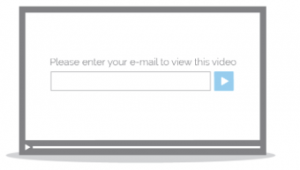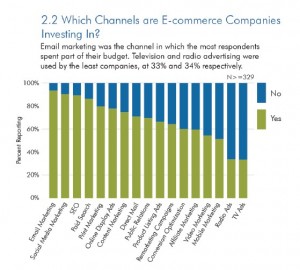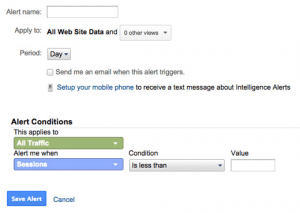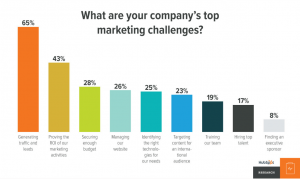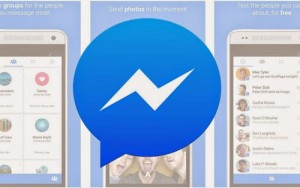Digital and social media have changed communication and the practice of marketing. This blog post tells a story about this paradigm shift.
Promotion is not as it used to be.
As part of the marketing mix (or the 4 P’s), Promotion is simply how you will strategically communicate to your target market about your Product, Place, and Price.
The choices for promotion or these communication efforts are endless, and grow daily with the flash forward of new media and the consumers relentless pursuit for the social sharing of their opinions, perspectives, and behaviors.
The most common methods for promoting a product/service are traditionally summarized and referred to as the promotion mix.
This promotion mix has typically included: advertising, personal selling, publicity/public relations, sales promotion, and direct marketing.
The Circus is Coming to Town is a classic analogy credited to P.T. Barnum and is often used in marketing textbooks and classrooms to illustrate the differences in these primary elements of the promotion mix.
However, this classic analogy needs a touch of the modern.
A Digital Marketing Update.
If the circus is coming to town and their marketing department pays for media space on the local TV and newspaper, that is advertising.
If someone sees the TV or newspaper ads, does a Google search for “circus nearby,” and notices a paid ad to the right of the search results, that is pay-per-click (PPC) advertising.
After completing this Google search, if that someone visits their personal Facebook page and sees another ad for the same local circus in their Facebook News Feed, that is retargeting and more specifically native advertising in paid social media.
If the circus marketing department sends out a press release announcing to the local news media about their pre-show party week in the City Park and use of the hashtag #CircusPartyInThePark, that is an attempt at getting publicity thru a proactive and planned public relations effort.
If there is a circus employee riding an elephant through the City Park one week before the first night of the circus, giving out free balloons to kids, and inviting everyone to attend the #CircusPartyInThePark, that is event marketing.
If the guy riding the elephant regularly stops to sell tickets, that is personal selling.
If the tickets are two-for-one (BOGO) during the evening hours of 7 to 10 when purchased on their mobile app, that is a limited-time incentive known as a sales promotion and a m-commerce transaction using mobile marketing.
If those buying a ticket on the circus website or mobile app are asked to opt-in for an email newsletter about circus news, special merchandise offers, and coupons, that is direct marketing or database marketing, and more specifically email marketing used for inbound marketing.
If the email newsletter regularly asks readers to follow a web link (CTA) to the circus WordPress blog to find original posts about the personal names, histories, and the care and feeding of all the circus animals, that is content marketing in owned social media.
If blog readers are encouraged to upload their geotagged selfies with the pre-show event animals to Instagram using the #CircusSelfieWithTheAnimals hashtag, that too is content marketing, and more specifically user-generated content.
If later in the event marketing first day the elephant gets annoyed at all the constant stopping for selfies and the popping balloons, breaks loose from the caretaker/marketer, tramples the Mayor’s wife’s special garden in the City Park, and this makes the local news, that is publicity.
If several witnesses use their iPhone to capture the Mayor’s first reaction using profanity when he sees his wife’s award-winning begonias trampled beyond recognition, uploads this reaction to YouTube, and many local residents share a link to the video on Twitter, that is also publicity and user-generated content in earned social media.
If the Mayor immediately calls a press conference to apologize for his slip of the profanity tongue and offers to sweeten the disposition of his personal brand by providing a fresh flower to all attendees at the first night of the circus, that is also using public relations to better control or spin the negative publicity.
If shortly after the press conference the Mayor jumps into his car, pulls out his laptop to announce on Twitter that he is hosting a Blab to chat with the circus’s elephant trainer, and answer questions about his love for circuses and elephants and flowers, that is using owned social media for live streaming or real-time marketing.
If someone else of the disparaging kind sneaks a smartphone picture of the elephant being chained and yelled at by the circus trainer as punishment for the flower garden incident, filters it with Instagram, and shares it on Facebook, that too is publicity using social media.
If someone on Facebook takes this photo and adds it to their Pinterest board called “Circuses are Cruel to Animals,” that is also earned social media.
If a social media influencer/ninja is inspired by the Pinterest board to write a blog post about “How Circus Abuse of Animals is a Lot Like Trolls Abuse of Social Media,” that is blogging in owned social media.
If the original YouTube video of the mayor’s profane reaction is embedded in this blog post, and the social media influencer/ninja immediately uses her Buffer app to optimize the timing of her blog post to Facebook, LinkedIn, and Twitter, that is social media optimization (SMO).
If she does this to cultivate backlinks that will increase the likelihood that her blog will show up higher in organic search engine results, that is search engine optimization (SEO).
These backlinks along with its connections with her personal named social media profiles will hopefully lead to an improved personal Klout score, that is personal SEO with efforts to manage the influence of her personal brand.
If all this fresh attention about the circus and their cruelty to animals is picked up by the national news media, that is even more publicity.
Then a teenager in Denver Colorado sees the national news stories and uses these to make an auto-tune YouTube mashup music video including the original YouTube profanity video, the earlier news interview of the Mayor, a sampling loop of the music from the Monster Mash, and calls it the “F Bomb Elephant Stomp.”
If after adding the #CircusPartyInThePark and #CircusSelfieWithTheAnimals hashtags, the video goes viral on YouTube with several million views within two hours, that is using social media for news-jacking and hashtag-jacking to get viral marketing.
And, if all this news, word-of-mouth, paid, earned, and owned social media results in sold-out tickets for all ten nights of the circus that is coming to town, that is the success of a promotion mix now remixed and amplified with use of new media and digital marketing.
The Take-Away.
Marketing communication efforts were once somewhat controllable with: (1) the use of paid media or advertising, (2) the expertise of spin control with public relations, (3) a finite number of media outlets, and (4) the short range of word-of-mouth.
Now such spin control is less effective and less controllable due to the democratizing effects of earned social media shared by millions of individual sized content publishers with remarkable influence and limited accountability.
Students and Professors of Marketing and Communications should now consider the promotion or communications mix to include: (1) paid versus earned versus owned social media, (2) marketer versus media versus customer controlled, (3) strategic versus real-time, and (4) analog versus digital.
Image: by Denny McCorkle
This article originally appeared on Digital Self Marketing Advantage and has been republished with permission.
Digital & Social Articles on Business 2 Community(65)
Report Post
